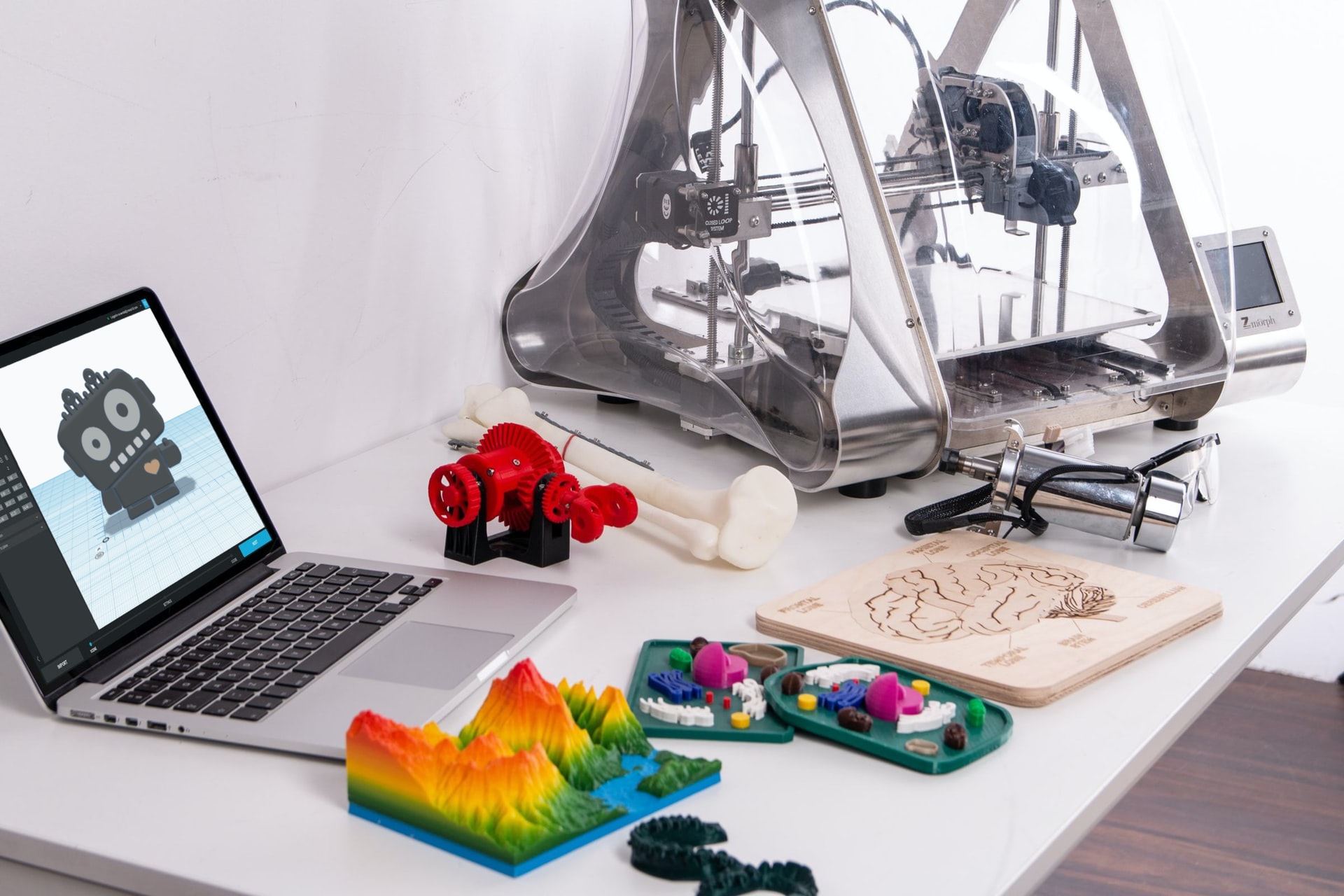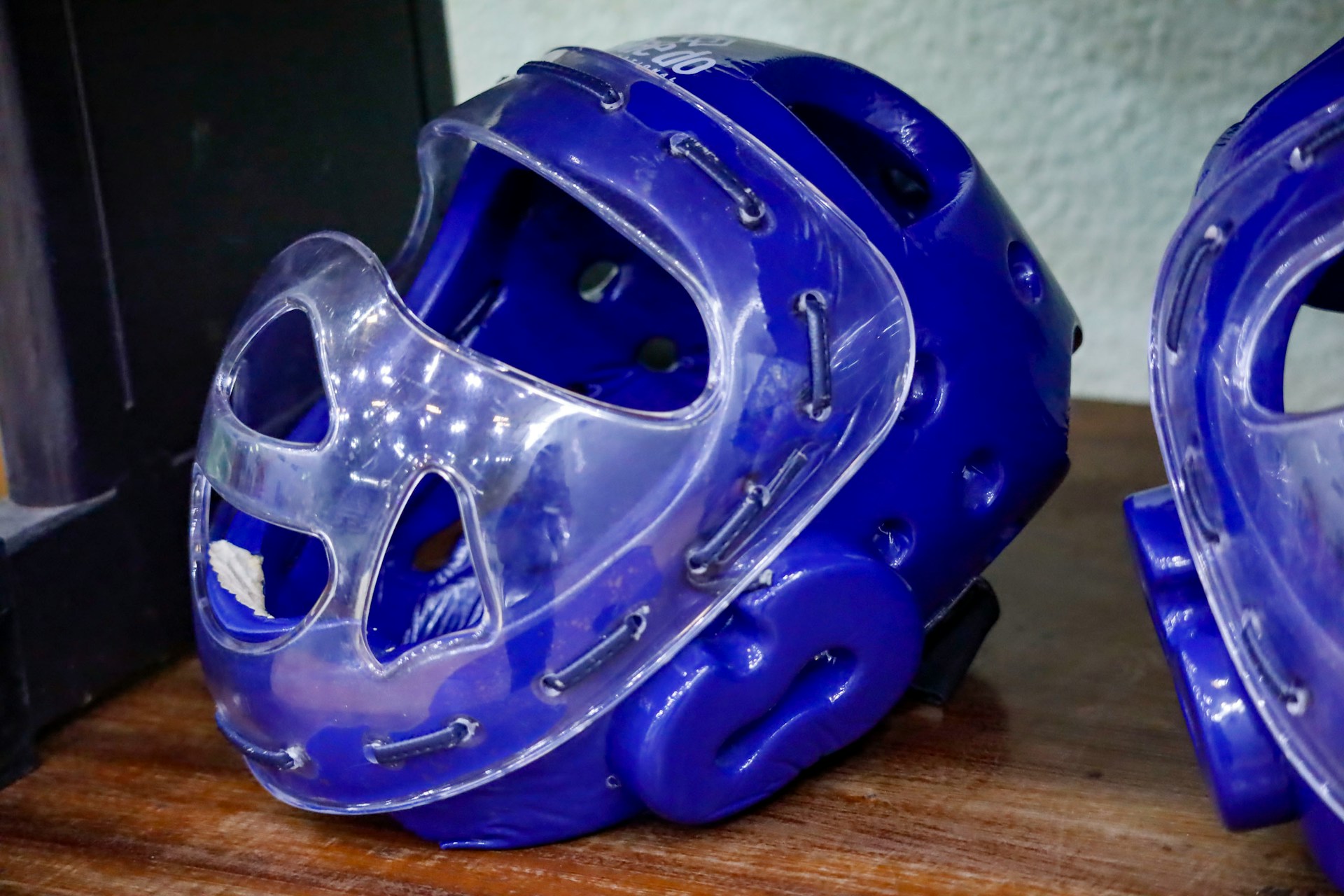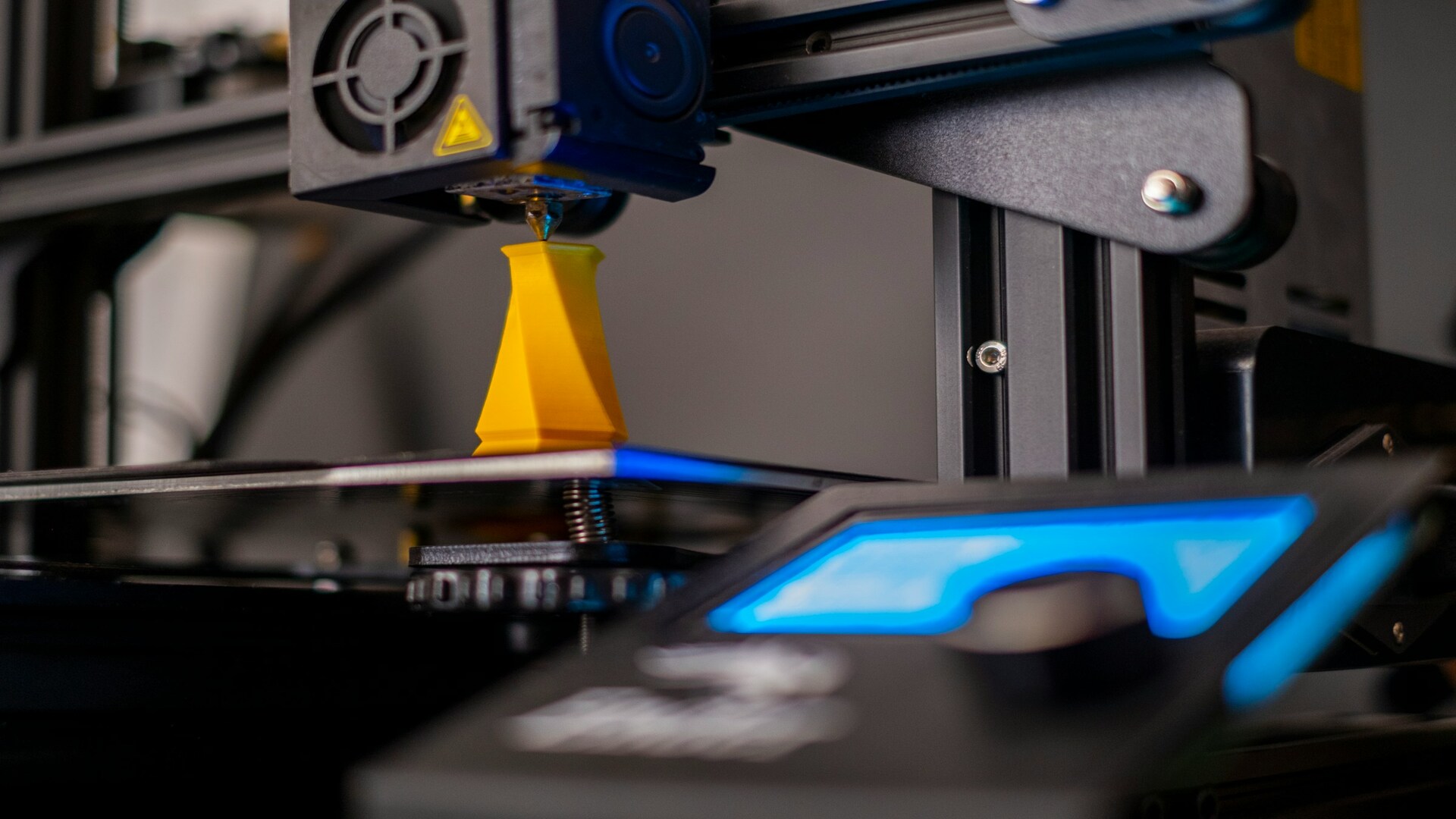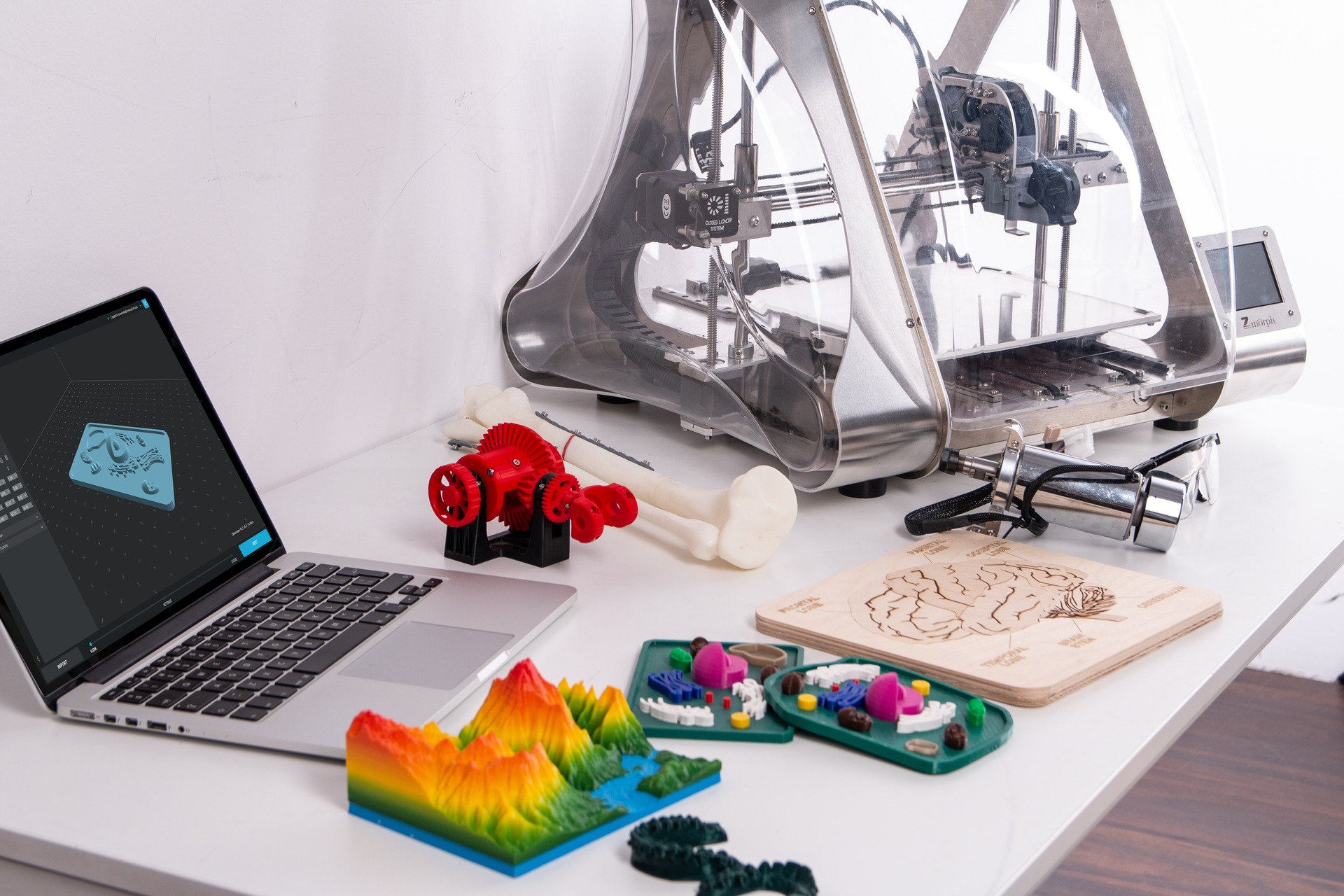
Plastic, Wood, Nanotechnology: 3D Printing Materials You Can Use Right Now
January 6, 2022 - Emily Newton
Revolutionized is reader-supported. When you buy through links on our site, we may earn an affiliate commission. Learn more here.
Of all Industry 4.0 technologies, 3D printing is one of the most unique. With a 3D printer, users can create real-world objects from digital files using a wide variety of materials.
Most end-users take advantage of easily available materials like thermoplastic filament. However, a diverse range of other materials are available. It’s also possible to print objects from wood, metal and even nanotechnology like carbon fiber.
These are the 3D printing materials that you can use to create objects — and the experimental materials that may arrive on the market in just a few years.
How Does a 3D Printer Use Materials?
All 3D printing projects start with a file — typically a digital model of the object to print. This file includes all the information about the object the printer needs to replicate it perfectly. The model file usually includes information like dimensions or component thickness.
These models are usually stored in STL or a similar widely-used CAD model file format. An STL file represents a model using many 2D planes. They stack together to create a three-dimensional object.
The 3D printer can generate printing instructions from this file. It then recreates the object by printing each of these layers on top of each other.
Often, the printer will create these layers from a material called PLA. PLA is a type of thermoplastic that comes in rolls of filament. The printer can heat the PLA filament strands. It then extrudes the warmed material through a nozzle or similar device. This allows the printer to precisely deposit the PLA on the printing surface.
By layering this plastic, the printer can slowly create the model represented in the file the user supplied.
Other materials may come in the form of powders or resins. These materials must get carefully heated or activated so the printer can use them.
Not all 3D printers can use all types of 3D printing material. Printing with metal, for example, may require a specialized 3D printer made for metal filaments or powders.
Most entry-level printers work with plastic filaments and handle a variety of consumer-grade printer plastic types.
Common Materials Used for 3D Printing
Plastic is the most common material used for 3D printing. Several types of plastic filament and materials exist. Each has its own advantages, disadvantages and price point.
Most plastic filaments are flexible, smooth and come in a wide range of colors available. Those characteristics make them a good fit for most 3D printing applications. Consumers and businesses using 3D printers for rapid prototyping typically use one or more kinds of plastic filament to print objects.
Easy-to-Find 3D Printing Plastics
PLA (or polylactic acid) is one of the most common types of 3D printing materials. That’s due in part to its high availability and wide color range. Many 3D printing experts recommend PLA to new users of 3D printing because of how versatile and easy-to-find the material is.
PLA is also partially biodegradable and typically bioderived from sources like corn starch, tapioca root and sugarcane. Printing with PLA does not require an open or well-ventilated space, as the material does not produce toxic fumes when heated.
ABS (acrylonitrile butadiene styrene) is a plastic commonly used in both 3D printing and injection molding. Compared to PLA, ABS has superior flexural strength and can elongate to a greater extent before breaking.
ABS is a good choice when people need a relatively strong and flexible end-product. Conversely, PLA is a practical option for rapid prototyping and disposable products.
ASA (acrylonitrile styrene acrylate) is similar to ABS but offers improved UV resistance. The material is a good fit for components or products frequently exposed to sunlight.
PETG (polyethylene terephthalate with glycol) is another common 3D printing plastic. It’s often used for moisture-resistant products, like water bottles.
The material combines the durability of ABS with the printability of PLA. It’s a good choice for users who want an easy-to-use material with durability and flexibility PLA doesn’t provide.
Niche-Use 3D Printing Plastics
PVA (polyvinyl alcohol plastic) is a water-soluble plastic material commonly used for dissolvable support components. It is also entirely biodegradable and harmless to the environment in low concentrations.
PVA filament is expensive, however. It can cost around three times as much as ABS or PLA.
Polycarbonate (PC) is a high-strength plastic material for use in engineering applications. The material has good thermal resistance and will maintain its shape at temperatures of up to 302 degrees Fahrenheit.
Unlike other plastics, it is not water-resistant. If not stored in an air and water-tight container, it may absorb moisture from the air. That complication makes it more difficult to print.
These aren’t the only plastic 3D printing materials available. However, they are the most common and easily available options. More advanced 3D printing plastics may be necessary for specific use-cases or when certain characteristics — like extreme durability or flexural strength — are essential.
Advanced 3D Printing Materials
In addition to more common materials, businesses and specialists may also use a growing range of advanced and niche printing materials. These materials may also come in the form of resins or powders, rather than filaments.
Advanced Plastic Materials
While most users of 3D printers use common plastics, numerous advanced filaments offer advantages or characteristics the common ones don’t.
- Polypropylene (PP) is a thermoplastic commonly used in the automotive and textile sectors. It is resistant to abrasion and can absorb shocks. The material is also sensitive to heat and UV rays, however, meaning that it may not be an option for certain applications.
- Conductive PLA and ABS combined PLA or ABS filament with conductive carbon particulates, allowing the filament to carry a charge. 3D printers can use this filament to create simple 3D circuits and conductive objects.
- Nylon objects are typically printed from a fine, white plastic powder. However, there is also a growing market of nylon filament available. Nylon is biocompatible, meaning it’s a viable solution for certain medical devices and plastic products that touch food.
Non-Plastic Printing Materials
After plastic, metal is the most common 3D printing material. The material is available in both filament and powder form.
A wide variety of metals, including aluminum, copper and stainless steel, are available. Many of these materials are lightweight, conductive and durable, making them a good fit for many different applications. Additionally, metal is often easier and more cost-effective to recycle than plastics.
Wood filament is a combination of PLA and wood fibers that make it possible to print wood — or something close. Available wood fibers will vary depending on the manufacturer of the wood filament. Common options include pine, cedar, bamboo and cork.
Wood-PLA filament doesn’t behave exactly like wood, but printed objects will have similar properties. For example, they may have porousness that allows for absorption of dyes and finishes. It’s also possible to print wood-PLA filament at a high temperature, burning the wood fiber and creating an end product with a darker color.
Many other PLA combination filaments, like sandstone-PLA filament, are also available. These filaments combine the utility of PLA with the unique characteristics of the added material.
Experimental and Cutting-Edge Possibilities
Researchers are constantly developing new materials with unique or unusual properties. Some of the most cutting-edge take advantage of nanomaterials like carbon fiber.
Carbon fibers are fibers about 5 to 10 micrometers (0.00020–0.00039 in) in diameter, made from carbon atoms carefully arranged into a honeycomb-like or lattice pattern. The material is extremely strong, very light and can withstand a wide range of temperatures.
Unfortunately, the material is extremely expensive to manufacture. Engineers haven’t yet developed a method for creating the material at an industrial scale.
Carbon fiber 3D printers are available for purchase, but manufacturers are the target audience. That means they’re out of the price range of most consumers. These printers use carbon filament, typically laid into a base material. The resultant 3D objects have many properties of carbon fiber.
What Can You Use in a 3D Printer?
Whatever your particular project needs, there’s probably a filament available. Plastic filaments, like PLA or ABS, are the most commonly used by printers. However, you can also take advantage of wood or metal filament to create projects with unique properties and appearances.
In the near future, consumers and small businesses may also be able to use cutting-edge materials like carbon fiber in their printing projects.
Revolutionized is reader-supported. When you buy through links on our site, we may earn an affiliate commission. Learn more here.
Author
Emily Newton
Emily Newton is a technology and industrial journalist and the Editor in Chief of Revolutionized. She manages the sites publishing schedule, SEO optimization and content strategy. Emily enjoys writing and researching articles about how technology is changing every industry. When she isn't working, Emily enjoys playing video games or curling up with a good book.







